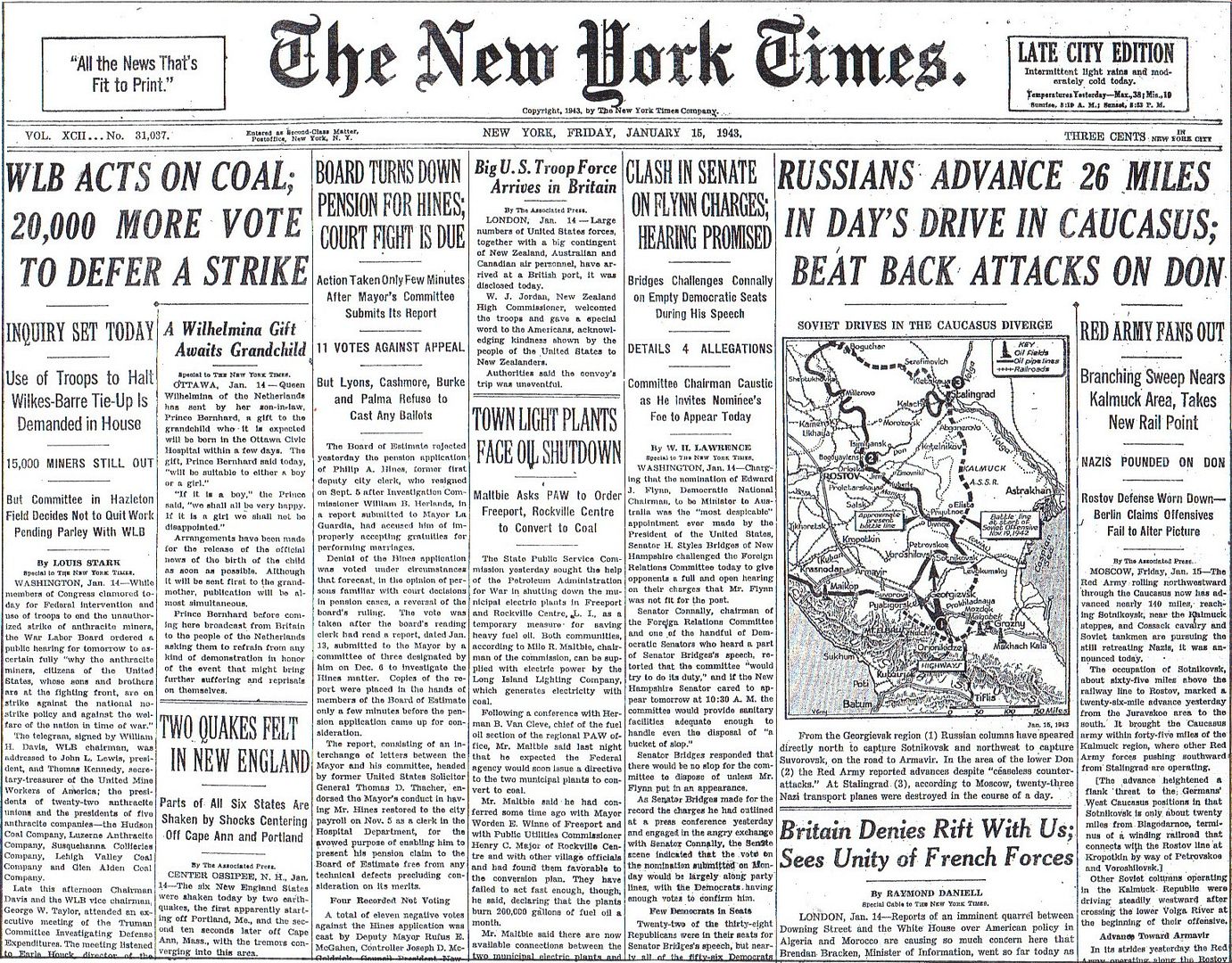
Posted on 01/15/2013 5:35:58 AM PST by Homer_J_Simpson

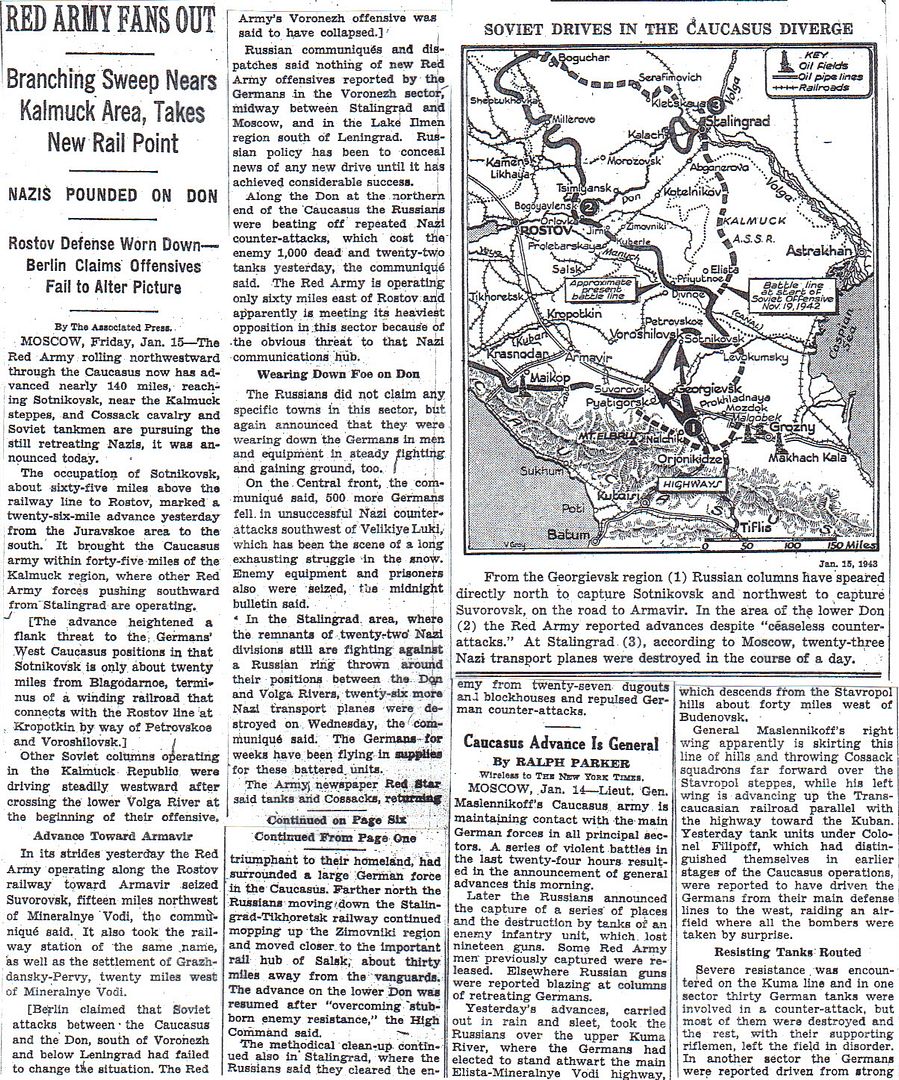
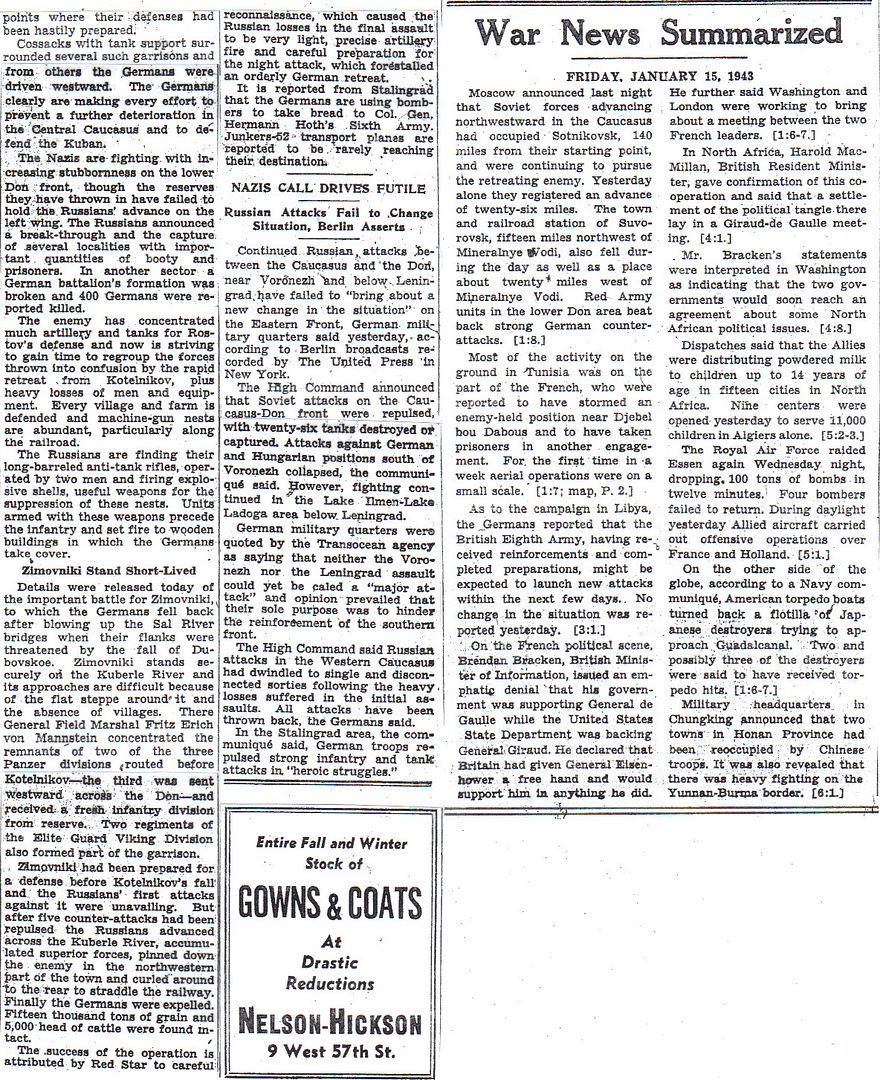
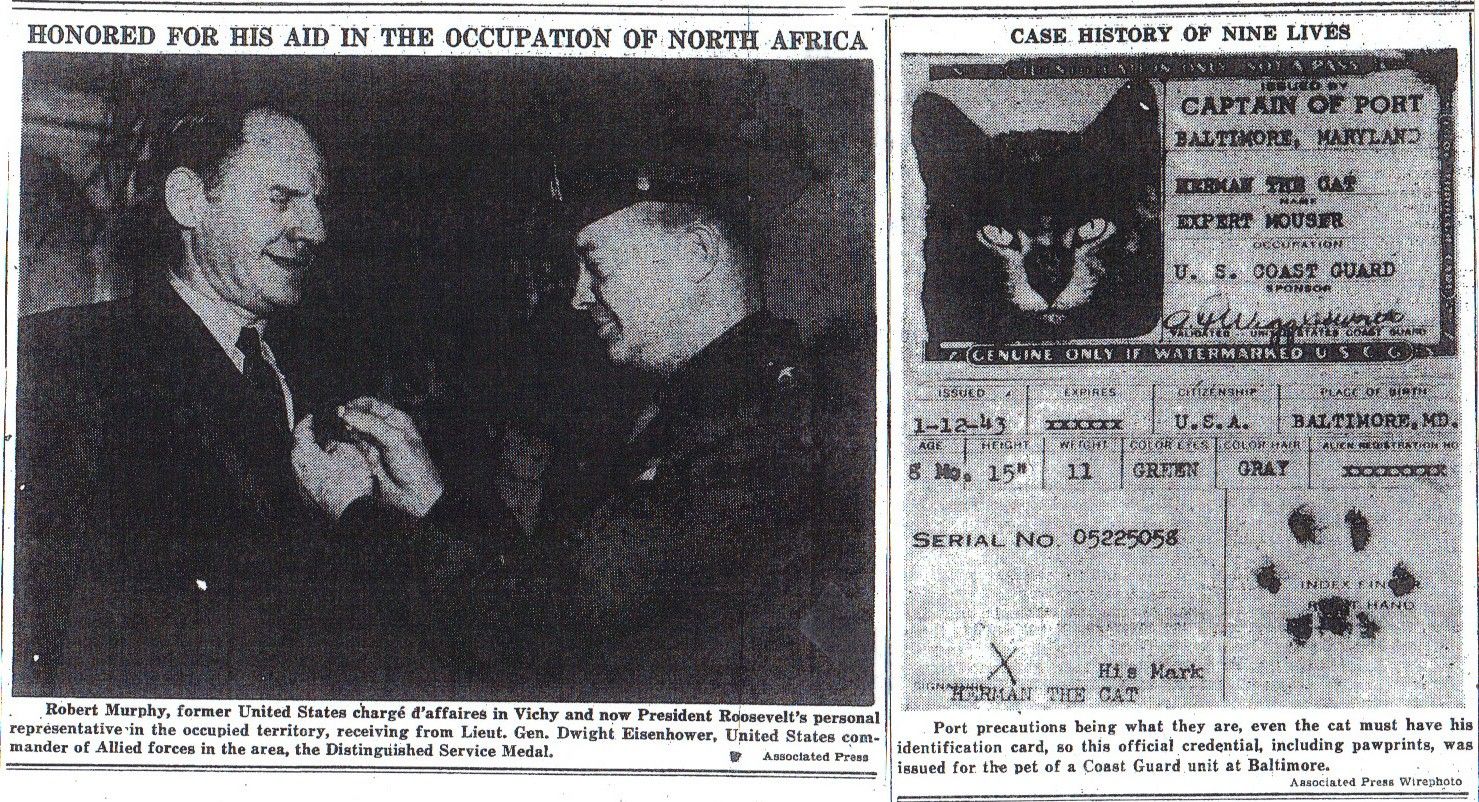
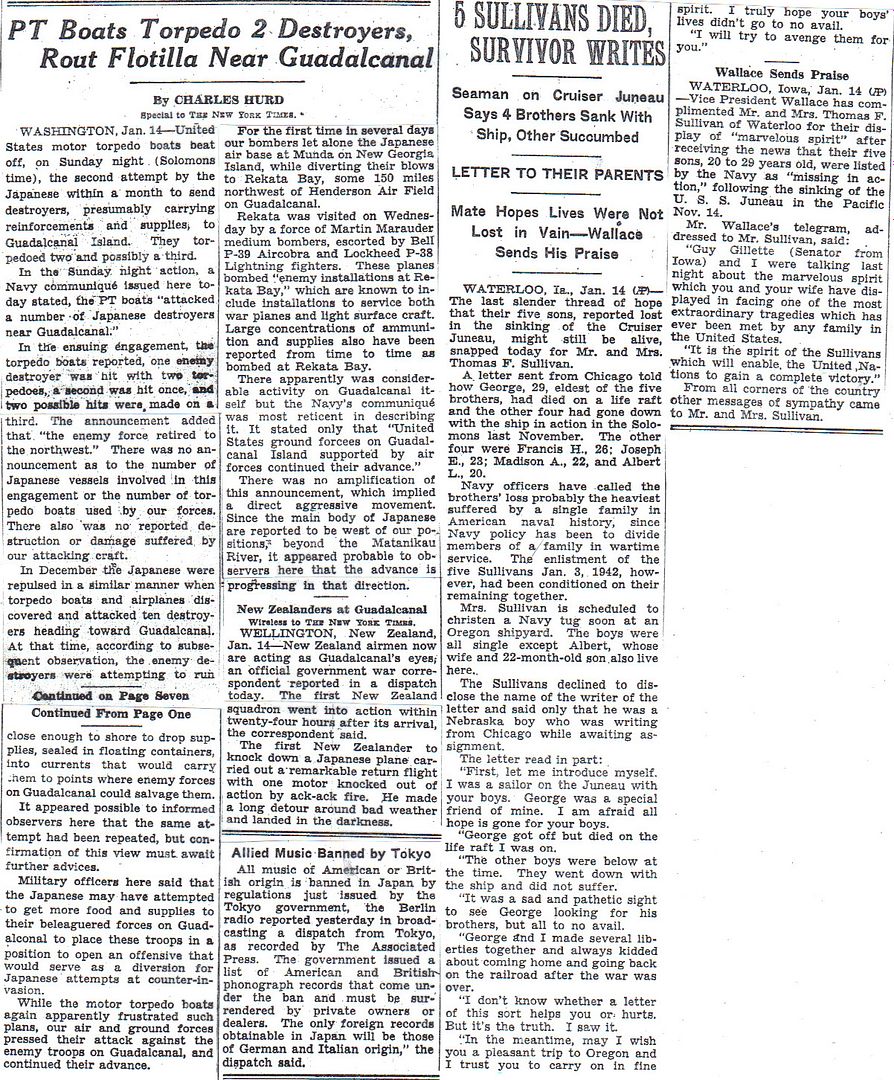
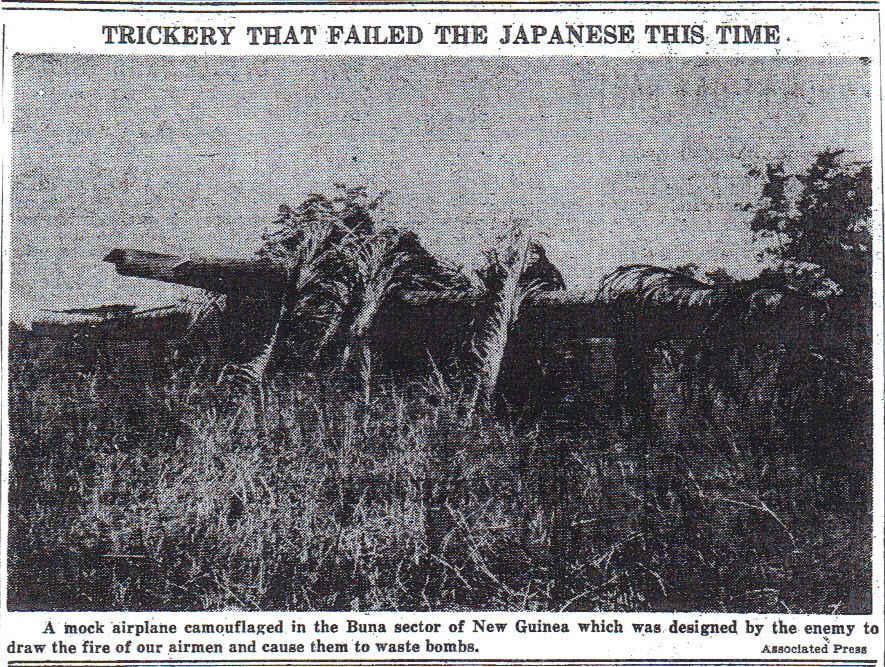

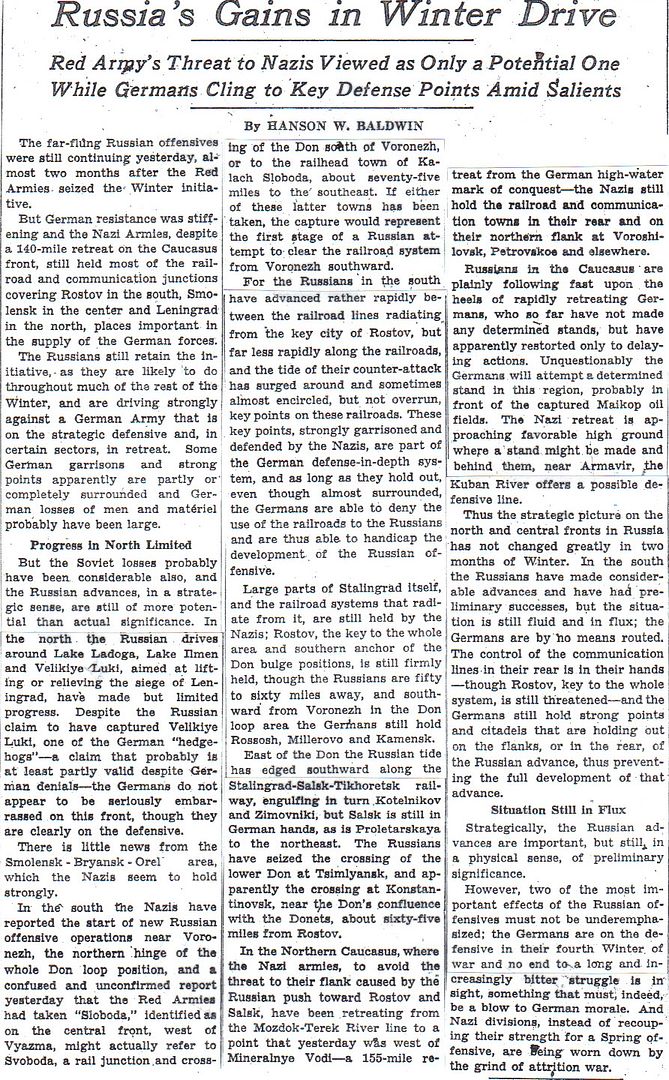
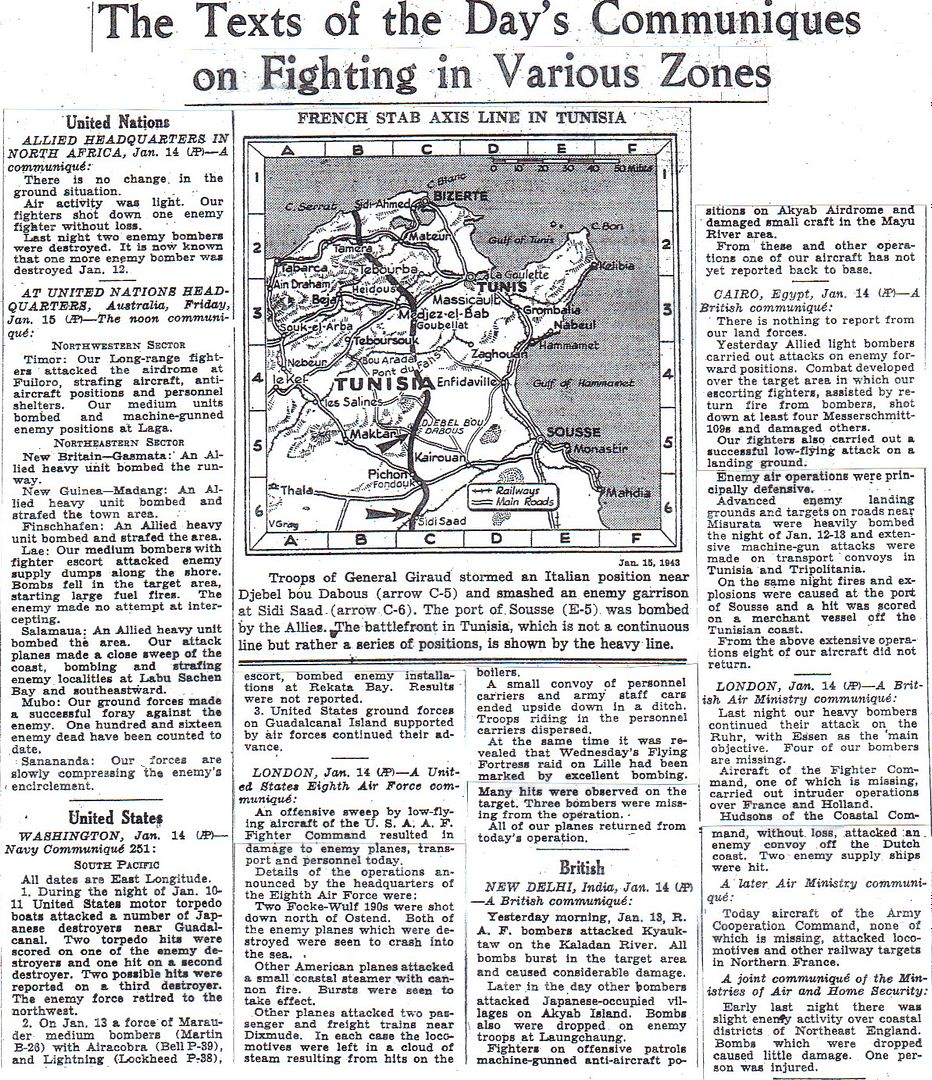
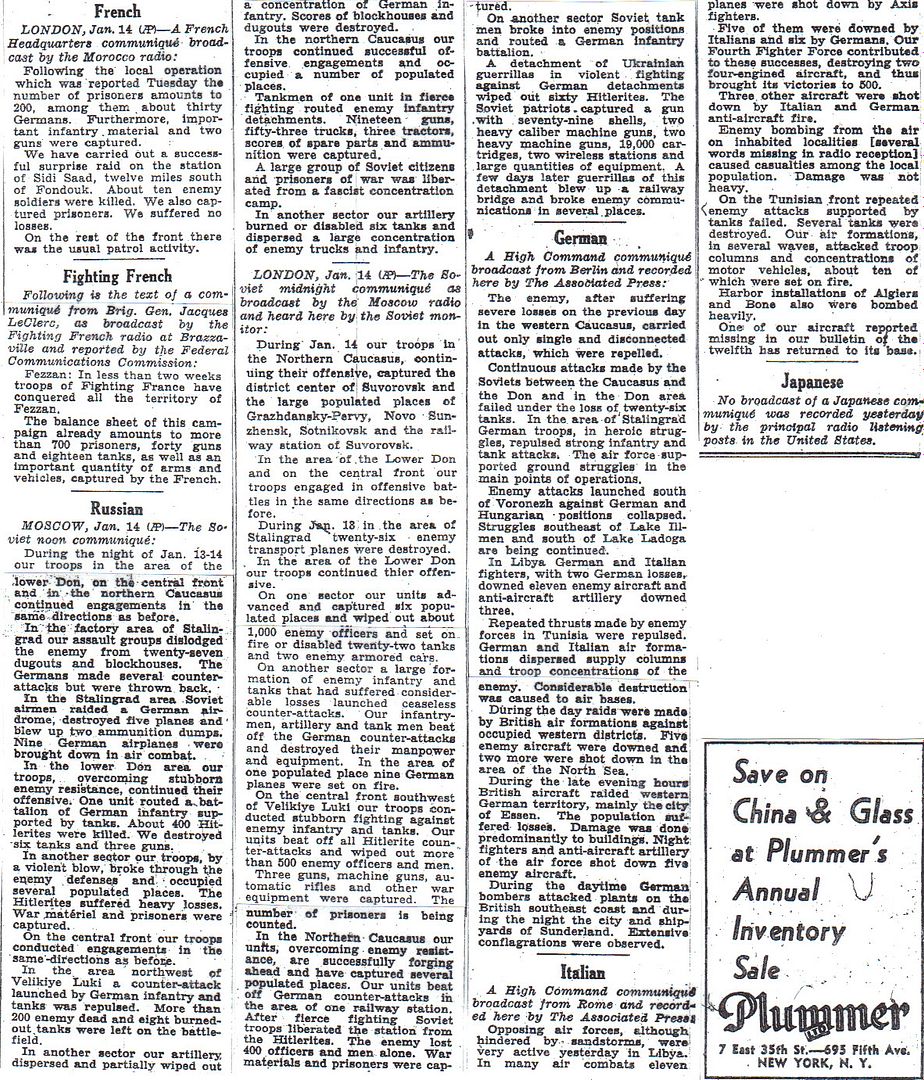
http://www.onwar.com/chrono/1943/jan1943/f15jan43.htm
Montgomery Launches a New Offensive
Friday, January 15, 1943 www.onwar.com
Destroyed German equipment litters the battlefield [photo at link]
In North Africa... Montgomery launches a new offensive. The Axis defenders are forced to retreat from the Buerat position.
In Morocco... The Casablanca Conference. The Anglo-American strategy discussions continue.
http://homepage.ntlworld.com/andrew.etherington/frame.htm
January 15th, 1943
EIRE: USAAF B-17E-BO Flying Fortress, USAAF s/n 41-9045, msn 2517, named “Stinky” assigned to the 414th Bombardment Squadron (Heavy), 97th Bombardment Group (Heavy), Twelfth Air Force, based at Biskra, Algeria, crashes at Athenry, County Galway. [Athenry is located about 12.7 miles (20,5 kilometers) east of Galway City]. Aboard are four U.S. Army generals: Jacob L. Devers, Commanding General Armoured Force; Edward Brooks, Commanding General 11th Armoured Division; Williston Palmer; and William Sexton. The four have spent the last month auditing the progress and status of the Allied military campaign in North Africa. The aircraft had taken off from Gibraltar en route to the U.K. so the four could check on the progress of plans for the invasion of Western Europe. Weather is bad and the crew becomes lost and is forced to land in Eire. When the Americans emerge from the aircraft, they are met by a contingent of the Local Defence Forces, the auxiliary force of the Irish Army. The crew surrender their weapons (they have, after all, crashed in a neutral country).
Shortly afterwards a detachment of the 1st Infantry Battalion arrives and takes charge. This unit consists of Irish-speakers from Connemara and the Aran Islands. (In western Ireland, there are many areas where the people speak Irish as their first language and English as their second language.) As the Irish-speaking soldiers go about their business, one of U.S. generals comments, “Gee, these guys sure know their codes.” The Americans are brought to a local hotel and by the end of the day, they have been transported over the border to Beleek, County Fermanagh, Northern Ireland, and the next day, they resume their work in England. Moving the plane is another matter. All news of the plane crash is censored, and a unit of the Irish Army from Galway is despatched to hack the plane apart. The local tinkers (menders of metal household utensils) are delighted and apparently do a roaring trade in aluminium buckets. (Jack McKillop)
GERMANY: Rastenburg: Hitler orders the Luftwaffe to fly in 300 tons of supplies a day to the besieged Sixth Army at Stalingrad, an impossible target at this stage.
U-1004 is laid down.
U-716, U-851 launched. (Dave Shirlaw)
YUGOSLAVIA: Bihac: Hitler’s fury with Yugoslav partisans boiled over today when 40,000 Germans, Italians and Ustachi (Croatian fascists) began the biggest offensive yet against Tito’s “ghost army”. Tito has already been forced out of his headquarters here on the Croatian border, and his partisans are moving south towards their stronghold on the slopes of Mount Durmitor, in Montenegro.
Organized retreat - with short, sharp counter-attacks, ambushes and demolition before disappearing into the rough terrain - is a technique used by Tito with increasing effect. The frustrated Axis troops can only reply with savagery meted out on any suspected of collaboration with the partisans. Mass executions are a daily event, with the Ustachi at the forefront in bestiality. Their leader, Ante Pavelich, the Nazis’ client ruler of Croatia, has just returned from meeting Hitler in the Ukraine.
Yugoslav partisans are pinning down thousands of Axis troops, but although Stalin is airlifting supplies to Soviet partisans, Tito’s pleas for aid have been turned down.
U.S.S.R.: Soviet troops crush the Hungarian Second Army at Voronezh.
Stalin signed the regulations known as ‘Prikaz 25’ of the National Defence Commissariat, which detailed, in 64 pages, the new uniforms of the Red Army. This document marked an astonishing about-face, in that it revived significant traditional uniform features which had been suppressed since the Revolution. While most noticeable in the case of officer’s uniforms, these ‘folk-lore’ items (high collar, shoulder boards, etc.) extended to all ranks. At a time of low morale, after suffering repeated defeats and millions of casualties, the Soviet regime consciously summoned up the ancient patriotic spirit of the Motherland; any reminders of even Tsarist glory were pressed into service. The revived prestige of the soldier’s uniform had a positive effect on the morale of the ‘Frontovik’. (Russell Folsom)(143)(p.30)
NORTH AFRICA: Montgomery begins his advance on Tripoli again and the Germans evacuate Buerat.
SOLOMON ISLANDS, GUADALCANAL: The second US attempt to reduce the Japanese positions on Mt. Austen, known as the Gifu, has been given to 2nd Btn 35th Infantry, commanded by Lt. Col Ernest Peters. His regimental CO Col. McClure and General Collins have decided that envelopment is not possible. He is directed to capture this position with a frontal assault. Since the 10th they have been attempting to follow these orders. He was given incomplete maps (it was all they had) and an estimate of 100 Japanese and 2 “known” machineguns. After his first couple of patrols, he increases this estimate to 400 and 20 machineguns. Peters mounts a general attack today. After a 15 minute mortar barrage the attack begins and manages to gain an average of 50 yards. A second attack at 1400 hours also fails. Col. McClure will replace Petes with Major Stanley Larsen tomorrow.
TERRITORY OF ALASKA: ALEUTIAN ISLANDS: Eight USAAF Eleventh Air Force P-38 Lightnings, three B-25 Mitchells and a B-24 Liberator patrol Constantine Harbor on the northeast coast, of Amchitka Island, fly reconnaissance over Kiska Island, where one ship is sighted, and fly negative armoured reconnaissance runs over Attu, the Semichis and Buldir Islands. (Jack McKillop)
CANADA: Lighters HMC HC 185, HC 186, HC 204 and HC 205 ordered. (Dave Shirlaw)
U.S.A.: Norfolk Navy Yard, Portsmouth Virginia: The keel of Aircraft Carrier Number 38 is laid, it will be called the ‘Shangri-La’ after President Roosevelt’s comment on where the aircraft which bombed Tokyo during the ‘Doolittle Raid’ came from.
Washington: The Pentagon building is completed. On the Virginia side of the Potomac River outside Washington, DC, a new Headquarters building for the Armed Forces of the US is completed. Due to the 5 sided architectural design, it will become known as “The Pentagon”. The size of this building will allow the US Army, US Navy and US Army Airforces to move their command functions into one place. These have been located all over the greater Washington, DC area. Many of them are housed in temporary buildings, “on the mall”, between the Lincoln Memorial and the Washington Monument. These temporary buildings were erected during WWI and were not expected to be in use much longer than the duration of that conflict. (Ray Cresswell)
LST-314 is commissioned. (JJ McKenna)
Submarine USS TANG (SS-306) is laid down at Vallejo, California, by the Mare Island Navy Yard. (John Nicholas)
Escort carrier USS Manila Bay laid down.
Submarine USS Manta laid down.
Aircraft carrier USS Shangri-La laid down.
Destroyer USS Nields commissioned.
Submarine USS Tinosa commissioned.
(Dave Shirlaw)
ATLANTIC OCEAN: A crewmember of U-134 committed suicide.
The unescorted Ocean Courage was torpedoed and sunk by U-182 about 200 miles south of the Cape Verde Islands. The master, 41 crewmembers, two gunners and two stowaways were lost. Six crewmembers and one gunner were picked up by the British merchant Silverwalnut and landed at Norfolk, Virginia.
At 1031, U-617 fired four torpedoes at a small convoy, consisting of two merchantmen, the Annitsa and Harboe Jensen, escorted by armed trawler HMS Southern Isles. Brandi observed two hits on each merchantman that had a great effect. Both merchantmen were sunk in the attack. One crewmember from the Annitsa was lost. The trawler rescued 31 survivors and a lifeboat picked up two survivors from the Harboe Jensen. The trawler later also picked up the survivors in the lifeboat. Harboe Jensen (Master Sverre Aanonsen) was hit by two torpedoes on the port side and sank immediately. The master and 17 crewmembers were lost. Five Norwegians and one British jumped overboard and found an upturned lifeboat, which they righted. They picked up two survivors from the Greek ship, before the trawler rescued them. Gunner Falkensten, who had also jumped overboard kept himself afloat on a plank and was rescued after about an hour. (Dave Shirlaw)
"For most Jews, the length of time spent in extermination camps was brutally abbreviated.
The horrifying efficiency of the Nazi death apparatus is captured by "Entrance Through the Gate, Exit Through the Chimney," an ink drawing by Holocaust survivor Joseph Bau."
"Cardinal Konrad Graf von Preysing, the bishop of Berlin during the Nazi era, viewed the Third Reich as a corrupt and pernicious regime.
As early as May 1933, Preysing challenged the ideological tenets of Nazism and openly called for their repudiation.
By January 1943 he was the only top German Catholic prelate who consistently opposed the German government's Jewish policies.
Preysing threatened to resign his post if the other German bishops continued their collaborative behavior."
"Léon Degrelle was the leader of the Belgian collaborationist group known as the Rexist movement.
The Rexists were explicitly pro-Nazi.
In 1943 Degrelle announced his plans to incorporate Belgium into the German empire.
While Degrelle enhanced his power, the Rexists were largely excluded from political power.
Moreover, many followers of the collaborationist movement became the targets of a ruthless assassination campaign carried out by the Belgian Resistance forces."
Velikiye Luki was a medieval Russian fortress near the borders with Livonia and Lithuania. It lay astride important trade routes. Originally it belonged to Pskov and later the Novgorod Republic, it was eventually absorbed into Russia. Unfortunately, the fortress, along with about everything else in the city, was destroyed during WWII. Today, it is a city of about 100,000 with some industry and a railroad junction.
I note that the Eastern Front generated German Army dead, missing and POW of about 2.1 million, double the figure for the Wehrmacht from all other fronts. A lot of Germans sent there never saw Germany again.
Did anyone notice how, mere days from the Sixth Army's final surrender at Stalingrad, Baldwin apparently has no clue as to what is now going on there?
Will he be surprised to learn?
Disclaimer: Opinions posted on Free Republic are those of the individual posters and do not necessarily represent the opinion of Free Republic or its management. All materials posted herein are protected by copyright law and the exemption for fair use of copyrighted works.